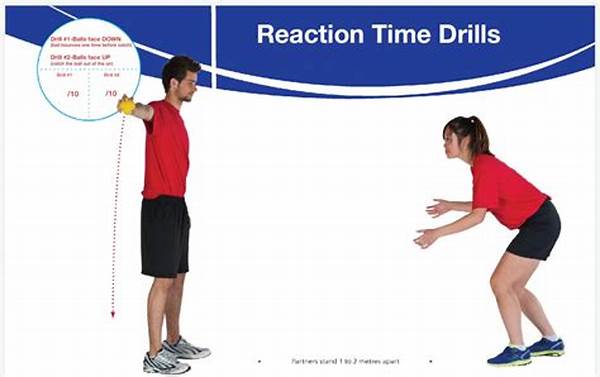Tips For Improving Reaction Time In Self-defense

Have you ever found yourself caught off guard in a split second, wishing you could react faster? Whether it’s about dodging a flying frisbee or evading potential danger, lightning-quick reflexes can be a life-saver. Self-defense isn’t just about mastering kicks and punches; it’s about turning your body into a well-oiled machine that responds immediately to any threat. In this blog post, we’ll talk about unique and effective strategies to turbocharge your reaction time, making sure you can handle any unexpected situations with grace and agility. So grab a comfy seat, maybe a cup of coffee, and let’s embark on this journey together!
Read More : How To Increase Your Speed in The 100-meter Dash
Self-defense is not just a skill; it’s a superpower hiding in your everyday routine. Picture this: you’re walking home late at night, and suddenly someone approaches in a threatening manner. Your enhanced reaction time will ensure you remain one step ahead, keeping you safer and more confident. The goal is to understand the nuances of your body’s response system and optimize it to your advantage. So, buckle up as we dive into the world of reflex training, a cocktail of science, strategy, and a dash of humor, to keep things light and engaging!
Understanding Reaction Time in Self-Defense
Improving reaction time is akin to acquiring a new language. It’s a skill crafted from the interplay between mind and muscle. To truly appreciate the importance of this skill, one should start by understanding what reaction time comprises. Simply put, reaction time is the interval between detecting a potential threat and your response to it. A swift reaction can make the difference between staying safe or facing trouble.
However, reaction time isn’t a one-size-fits-all solution. It varies with several factors: age, physical condition, training, and even your mental state. But the good news is, with dedication and the right exercises, anyone can significantly enhance their reflexes. So, how do we make quicker reactions second nature? Prepare to unlock tips for improving reaction time in self-defense.
Mastering the Reflexes
The fundamental principle of improving reaction time is understanding the mechanics behind reflex actions. This involves brain training exercises that sync your cognitive processing and muscle response times. One effective method is hand-eye coordination drills, which refine your simultaneous perception and action reflexes. Further, exercises like shadowboxing in front of a mirror can perceptibly enhance your alertness and speed.
Practical Tips for Speedy Reactions
For self-defense enthusiasts, one can’t go without practicing sudden movement exercises. Initiate your routine with moderate-paced drills and gradually increase speed. Reaction ball training is another fantastic tool. These tiny, unpredictable tools bounce in random directions, challenging your reflexes with each leap. Incorporate such devices to mimic unpredictable real-world scenarios and take advantage of nature’s unpredictability to cement your reflex prowess.
Detailed Guide to Improving Reaction Time
Enhancing your reaction time involves various strategies, each contributing to a more effective self-defense approach. To help, here’s a comprehensive list of activities and practices you can incorporate into your weekly routine.
Pointed Tips for Quickening Reflexes
In the world of self-defense, each split second counts. Here are succinct strategies to fast-track your reflex prowess:
1. Start with the Basics: Establish a foundation with standard defensive moves and build on complexity slowly.
2. Consistency is Key: Practice regularly. Reaction time, like any other skill, improves with repetition.
Read More : History Of The Development Of World Soccer
3. Respond, Don’t Anticipate: Train yourself to react to signals rather than preemptively moving, preventing premature actions.
4. Engage all Senses: During practice, use drills that engage touch, sight, and sound to prepare for multi-sensory inputs in real situations.
5. Set Personal Benchmarks: Measure your current reaction time and challenge yourself to improve each week.
6. Stay Relaxed: Tension can slow you down; practice relaxed breathing and body movements.
Concluding Thoughts on Reflex Mastery
By now, it should be evident that improving reaction time in self-defense isn’t about magic; it’s science and practice sprinkled with creativity and a hint of fun. Visualize yourself as a finely tuned instrument, which performs optimally under any circumstance. As you’ve seen, there are various ways to enhance reflexes, and amalgamating these methods can yield impressive results.
Reaction time can significantly influence outcomes in critical moments. Whether you’re a self-defense novice or a seasoned expert, embracing these strategies can lead to mastering your reflexes and boosting your confidence—essential components of effective self-defense.
Remember, the goal is not to seek danger but to be prepared should it find you. So take these tips for improving reaction time in self-defense to heart, apply them to your practices, and embolden yourself each day. Stay safe and keep practicing—the world is your dojo!



